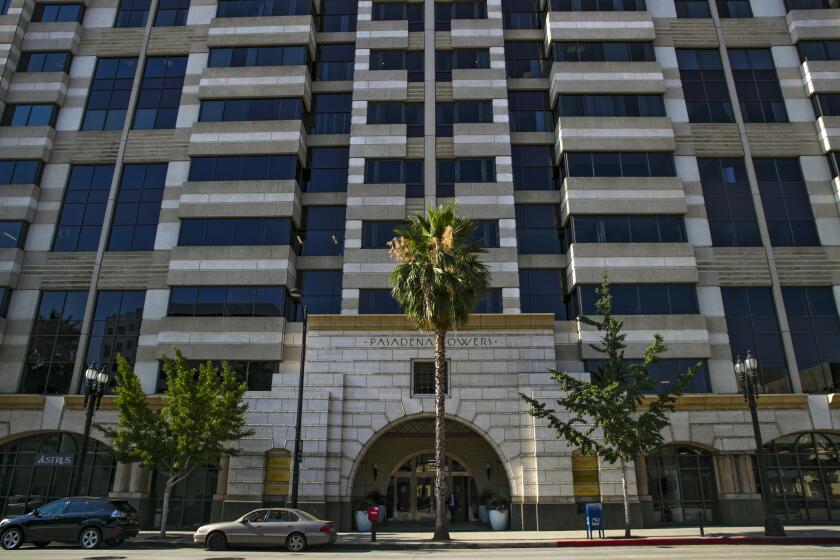China bounces back, but is it for real?
When China releases its third-quarter gross domestic product figures Thursday, it’s likely to post growth that’s the envy of a recession-weary globe. Some analysts project the world’s third-largest economy will easily surpass the government’s 8% expansion target.
China’s exports are rebounding. Tens of thousands of laid-off workers are being rehired. Stocks and real estate have been on a tear.
Though economists credit Beijing’s policies for carrying the country through the worst of the global crisis, some question the sustainability of the recovery. Some say that too much of China’s growth is coming from investment in inefficient state-owned enterprises and that current stimulus policies are diverting the country away from the reform long needed to balance its economy.
“They’re moving the economy in exactly the wrong direction,” said Yasheng Huang, a professor at the Massachusetts Institute of Technology’s Sloan School of Management and a leading critic of China’s economic strategy.
At the heart of China’s recovery is a $585-billion government stimulus package and a torrent of new bank loans totaling $1.27 trillion this year. The injection has kept industry humming, maintained employment at reasonable levels and launched billions of dollars’ worth of public infrastructure projects.
Beijing has also increased spending on health, education and pension plans. To stimulate domestic consumer spending, the government has offered subsidies for purchases of fuel-efficient cars and home appliances.
But some complain that those policies still favor large, government-owned firms at the expense of small businesses in the private sector.
“Most banks only lend to those big state-owned companies that don’t need it,” said Liu Lin, a sales manager at a small, privately owned aluminum company in southern China. “For an entrepreneur, it’s almost impossible to get start-up capital.”
Officials in recent weeks have warned against overcapacity in 10 key industries, including steel, aluminum and even green technology such as wind turbines. China will be looking to unload excess production in foreign markets, which could worsen already tense trade relationships. The United States and China have wrangled over tires, chicken and auto parts in recent months. The U.S. is now investigating Chinese imports of steel pipes for evidence of dumping and subsidies.
These problems are unlikely to be resolved until regulators rein in easy credit for the most inefficient companies. Loose money is also stoking fears of asset bubbles in real estate, stocks and commodities.
“When you have such a large amount of bank lending going on, you have to be worried,” said Louis Kuijs, senior economist for the World Bank in Beijing. “The authorities . . . have concluded that the downside risk to growth [is] so important that they would rather keep the expansionary plan.”
Some analysts, including Andy Rothman, an economist at brokerage and investment group CLSA Asia-Pacific Markets, laud Chinese policymakers for solid stewardship during the global downturn. China’s stimulus plan, Rothman said, was never intended to rebalance the economy, and Beijing deserves credit for delivering solid growth.
“They just needed to keep the economy going,” he said. “China still needs a lot of investment. They’re not building bridges to nowhere.”
Still, experts acknowledge that Beijing must do something to address the fundamental imbalances in China’s export-heavy economy. That means getting more money into the hands of ordinary citizens to promote domestic consumption to insulate the economy from export declines.
Such reform is already underway, including a $125-billion healthcare plan and subsidies for rural residents to buy consumer goods. Gao Jinghong, a wheat farmer in central Henan province, said a 13% government rebate persuaded him to buy his first refrigerator.
“I don’t remember the last time I spent this much money,” said Gao, whose appliance cost about $300. “I know I wouldn’t have done it if it wasn’t for the rebate.”
Rebalancing the world economy has become the mantra of groups such as the World Bank and the International Monetary Fund. Leaders at the Group of 20 summit last month in Pittsburgh also called on China to do its part by boosting private entrepreneurship, expanding social services and liberalizing its financial sector.
Any rebalancing would eventually have to address the value of China’s currency.
The Obama administration said last week that it had serious concerns about the value of the renminbi, commonly known as the yuan. But U.S. officials stopped short of accusing China of manipulating its currency, a designation that would require potentially damaging sanctions.
China pegged its currency to the dollar at the outbreak of the financial crisis and the yuan has slid with the greenback in recent weeks. The decline has given its exports a comparative advantage at the expense of Europe and neighboring Asian exporters in recent months.
Exports contracted 15.2% year-on-year in September, an improvement from the 23.4% drop in August and the slowest rate of decline of any month this year. The pickup helped drive China’s foreign-exchange reserves to a record $2.273 trillion in the third quarter.
“They’re getting a bigger slice of a smaller pie of exports,” said Nicholas Lardy, a China specialist at the Peterson Institute for International Economics in Washington. “That indicates there will be more friction” with trading partners.
Ideally, economists say, a stronger yuan and wealthier Chinese consumers could boost sales of American imports and pare down a trade imbalance between the two countries that stood at $143.7 billion through August.
But that appreciation has to happen naturally through rising per-capita income and a shift away from export-led growth, experts say.
Although some of China’s leading economists are predicting growth of 9% in the third quarter, fueled by record amounts of government spending, Beijing knows it cannot stimulate the country with fiscal policy forever. Even President Hu Jintao acknowledged last month that China’s comeback was not assured.
“China’s economy is recovering from the global downturn, but the foundation of economic recovery is not stable, not solid and not balanced, and there are still many uncertain factors in China and internationally,” Hu said in a communique at a meeting of the Communist Party’s Central Committee.
Beijing is hoping its investment can keep the economy moving forward long enough until the global economy rebounds. Then it can address reforms.
“It’s a bet the government is making that this will pay for itself,” said Stephen Green, head of China research for Standard Chartered Bank. “You can take a skeptical point of view, as some people have, or be optimistic. To be honest, I don’t think we know what’s going to happen.”
--
Tommy Yang in The Times’ Beijing bureau contributed to this report.
More to Read
Inside the business of entertainment
The Wide Shot brings you news, analysis and insights on everything from streaming wars to production — and what it all means for the future.
You may occasionally receive promotional content from the Los Angeles Times.










